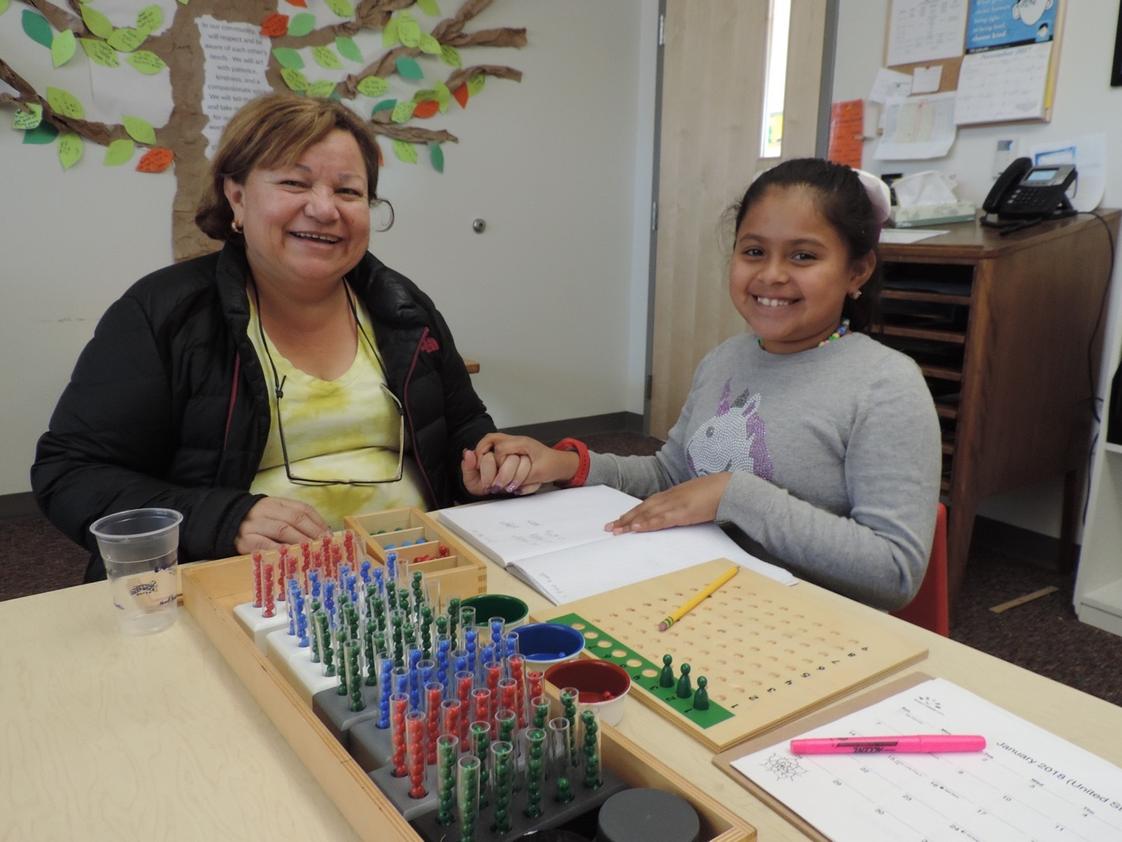Serving 213 students in grades Kindergarten-8, Ross Montessori School ranks in the bottom 50% of all schools in Colorado for overall test scores (math proficiency is bottom 50%, and reading proficiency is bottom 50%).
The percentage of students achieving proficiency in math is 15-19% (which is lower than the Colorado state average of 32%). The percentage of students achieving proficiency in reading/language arts is 35-39% (which is lower than the Colorado state average of 45%).
The student:teacher ratio of 21:1 is higher than the Colorado state level of 15:1.
Minority enrollment is 41% of the student body (majority Hispanic), which is lower than the Colorado state average of 50% (majority Hispanic).
Quick Stats (2025)
- School Type: Charter School
- Grades: Kindergarten-8
- Enrollment: 213 students
- Student:Teacher Ratio: 21:1
- Minority Enrollment: 41%
- Overall Testing Rank: Bottom 50% in CO
- Math Proficiency: 15-19% (Btm 50%)
- Reading Proficiency: 35-39% (Btm 50%)
- Science Proficiency: 40-59% (Top 30%)
- Source: National Center for Education Statistics (NCES), CO Dept. of Education
School Overview
Ross Montessori School's student population of 213 students has declined by 32% over five school years.
The teacher population of 10 teachers has declined by 68% over five school years.
School Type
Grades Offered
Grades Kindergarten-8
Total Students
213 students
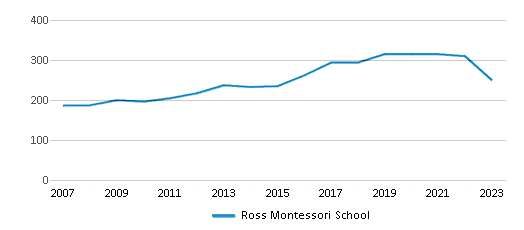
Gender %
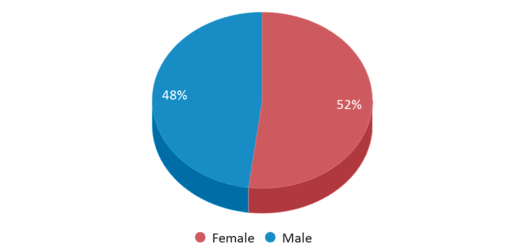
Total Classroom Teachers
10 teachers
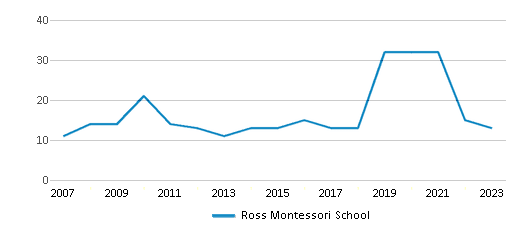
Students by Grade
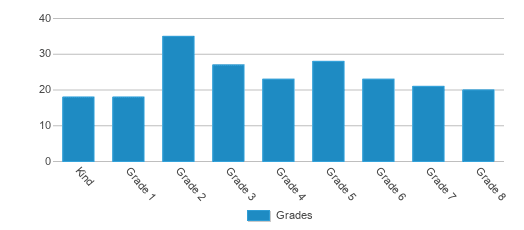
School Calendar
School Rankings
Ross Montessori School ranks within the bottom 50% of all 1,779 schools in Colorado (based off of combined math and reading proficiency testing data).
The diversity score of Ross Montessori School is 0.53, which is less than the diversity score at state average of 0.62. The school's diversity has stayed relatively flat over five school years.
Overall Testing Rank
#1139 out of 1779 schools
(Bottom 50%)
(Bottom 50%)
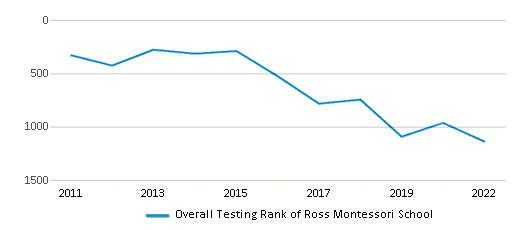
Math Test Scores (% Proficient)
15-19%
32%
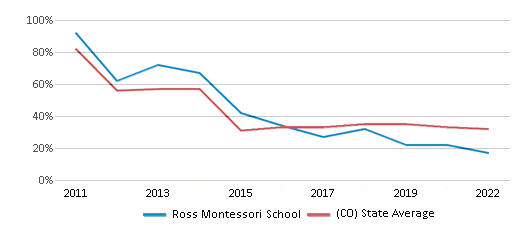
Reading/Language Arts Test Scores (% Proficient)
35-39%
45%
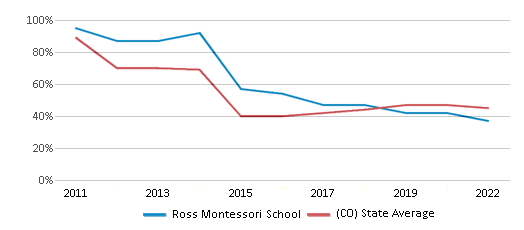
Science Test Scores (% Proficient)
(20-21)40-59%
29%
Student : Teacher Ratio
21:1
15:1
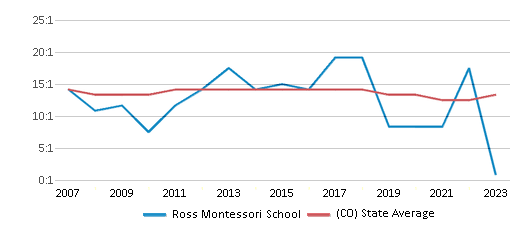
American Indian
n/a
1%
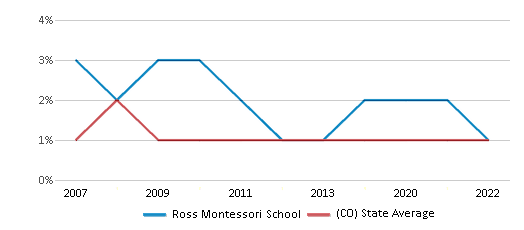
Asian
1%
3%
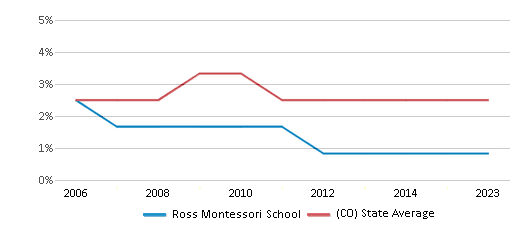
Hispanic
35%
36%
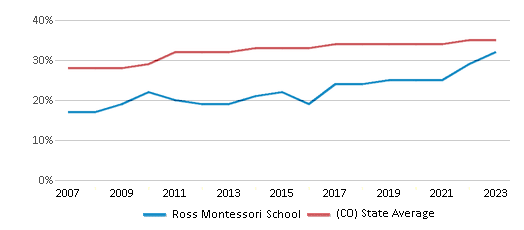
Black
1%
5%
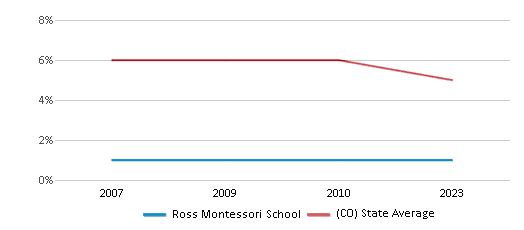
White
59%
50%
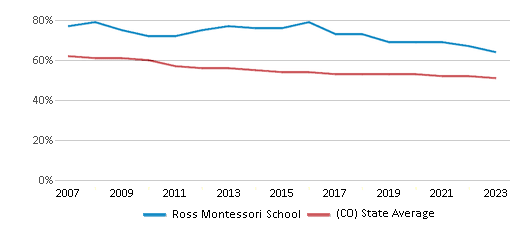
Hawaiian
1%
n/a
Two or more races
3%
5%
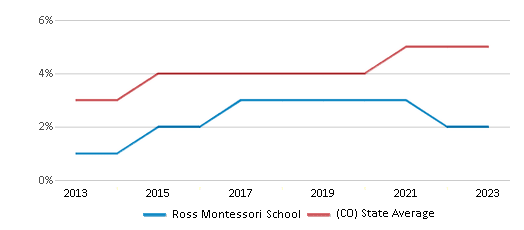
All Ethnic Groups
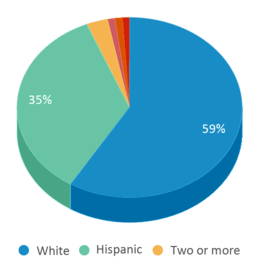
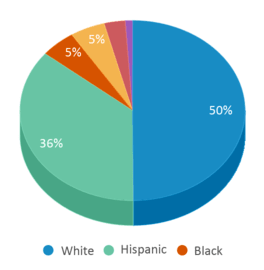
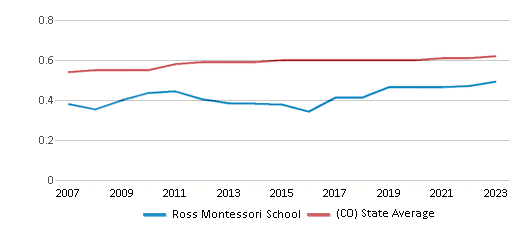
Eligible for Free Lunch
17%
39%
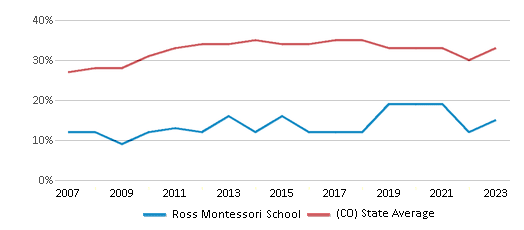
Eligible for Reduced Lunch
12%
6%
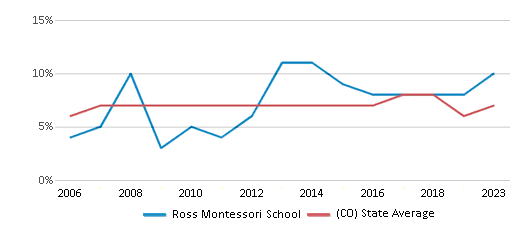
School Statewide Testing
School District Name
Sports
Total Sports Offered
6 sports
Sports
Cross Country, Cross Country Running, Fencing, Field Hockey, Mountain Biking, Winter Track
Extracurriculars
Total ExtracurricularsTotal Extra-curric.
1 extracurricular
ExtracurricularsExtra-curric.
Club or Organization:
Access After School
Access After School
Source: National Center for Education Statistics (NCES), CO Dept. of Education
School Notes
- Our Core Values Are Children, Joy of Discovery, Dedication to Mastery, Compassionate Love, and Community
- The mission of Ross Montessori School is to prepare compassionate life-long learners to have a positive impact on the world. We envision a time when Ross Montessori School will be an exemplary educational institution and recognized as such all over the world. Educators from all backgrounds will observe and learn from our model, grounded in the Montessori Method. Parents will choose our school over any other with a steadfast belief in the value we create for the children, families, and communities we serve.Our children will be immersed in the joy of discovery. Programming will be enriched with art, music, and drama through all the seasons. Students will actively participate in community service projects and conservation programs, and every child will emerge as a creative and competent problem solver.We will send citizens into the world who have a profound impact on their communities. They will face adversity and challenge with humility, grace, and compassion. They will inspire others to better the Earth and its inhabitants. All who know them will be better for it for generations into the future.
Profile last updated: 02/09/2025
Frequently Asked Questions
What is Ross Montessori School's ranking?
Ross Montessori School is ranked #1139 out of 1,779 schools, which ranks it among the bottom 50% of public schools in Colorado.
What schools are Ross Montessori School often compared to?
Ross Montessori Schoolis often viewed alongside schools like Carbondale Community Charter School, Crystal River Elementary School by visitors of our site.
What percent of students have achieved state testing proficiency in math and reading?
15-19% of students have achieved math proficiency (compared to the 32% CO state average), while 35-39% of students have achieved reading proficiency (compared to the 45% CO state average).
How many students attend Ross Montessori School?
213 students attend Ross Montessori School.
What is the racial composition of the student body?
59% of Ross Montessori School students are White, 35% of students are Hispanic, 3% of students are Two or more races, 1% of students are Asian, 1% of students are Black, and 1% of students are Hawaiian.
What is the student:teacher ratio of Ross Montessori School?
Ross Montessori School has a student ration of 21:1, which is higher than the Colorado state average of 15:1.
What grades does Ross Montessori School offer ?
Ross Montessori School offers enrollment in grades Kindergarten-8
What school district is Ross Montessori School part of?
Ross Montessori School is part of State Charter School Institute School District.
School Reviews
Review Ross Montessori School. Reviews should be a few sentences in length. Please include any comments on:
- Quality of academic programs, teachers, and facilities
- Availability of music, art, sports and other extracurricular activities
Recent Articles

What Is A Charter School?
Explore the world of charter schools in this comprehensive guide. Learn about their history, how they operate, and the pros and cons of this educational innovation. Discover key facts about charter schools, including admission policies, demographics, and funding, as well as what to look for when considering a charter school for your child.

10 Reasons Why High School Sports Benefit Students
Discover the 10 compelling reasons why high school sports are beneficial for students. This comprehensive article explores how athletics enhance academic performance, foster personal growth, and develop crucial life skills. From improved fitness and time management to leadership development and community representation, learn why participating in high school sports can be a game-changer for students' overall success and well-being.

February 05, 2025
Understanding the U.S. Department of Education: Structure, Impact, and EvolutionWe explore how the Department of Education shapes American education, from its cabinet-level leadership to its impact on millions of students, written for general audiences seeking clarity on this vital institution.


